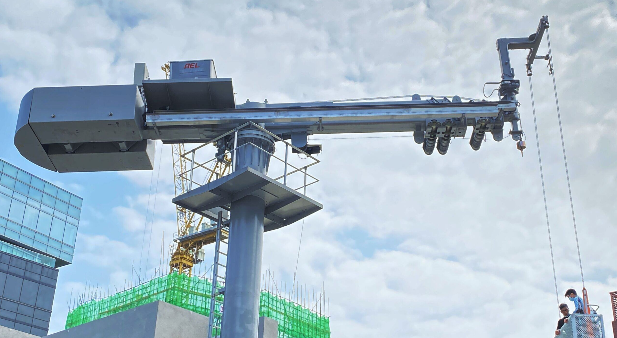IoT smart building solution refers to the integration of Internet of Things (IoT) technologies within building management systems to optimize operations, improve energy efficiency, and enhance occupant comfort. These systems connect devices such as sensors, controllers, meters, and software platforms to gather and analyze data in real time. Unlike traditional buildings, which rely on manual control or isolated systems, smart buildings leverage automation and data-driven insights to adapt to changing conditions automatically.
From adjusting lighting based on occupancy to predicting HVAC maintenance needs, an IoT smart building solution transforms facilities into intelligent environments that respond dynamically to their surroundings. This level of integration not only streamlines operations but also helps organizations achieve sustainability goals.
Key Components of an IoT Smart Building Solution
A well-designed IoT smart building solution consists of several core components:
- Smart Sensors and IoT Devices: These include temperature sensors, motion detectors, CO2 sensors, and occupancy sensors that continuously collect data from the environment.
- Building Management System (BMS): The BMS acts as the central hub, coordinating data from various sources and enabling automated responses.
- Connectivity and Cloud Integration: IoT devices communicate over secure networks, sending data to cloud platforms for storage and analysis.
- Analytics and AI Engines: Data analytics software processes the collected information and delivers actionable insights.
- User Dashboards and Interfaces: Building managers use intuitive dashboards to monitor building performance and manually adjust settings when needed.
These interconnected components ensure a comprehensive approach to smart building operations, allowing seamless communication between systems.
Benefits of IoT Smart Building Solutions
Organizations that invest in an IoT smart building solution enjoy numerous benefits, including:
- Energy Efficiency: Smart systems automatically adjust lighting, heating, and cooling based on occupancy and usage patterns, reducing unnecessary energy consumption.
- Predictive Maintenance: Sensors detect anomalies in equipment performance, allowing for proactive maintenance before failures occur. This reduces downtime and repair costs.
- Cost Savings: By optimizing energy use and minimizing maintenance needs, facilities can significantly reduce operational expenses.
- Enhanced Occupant Comfort: Personalized settings, optimal lighting, and air quality improvements contribute to better employee productivity and satisfaction.
- Real-Time Monitoring: Facility managers gain full visibility into building performance, enabling fast decision-making and continuous improvement.
- Environmental Sustainability: Reducing resource consumption and emissions supports corporate social responsibility (CSR) initiatives and regulatory compliance.
Whether managing a single building or a global portfolio, adopting an IoT smart building solution creates measurable value.
Use Cases and Applications Across Building Types
IoT smart building solutions are versatile and scalable, making them suitable for a wide range of applications:
- Commercial Office Buildings: Monitor occupancy to adjust lighting and HVAC systems, manage meeting room availability, and track energy usage in real time.
- Industrial Facilities: Monitor equipment status, track inventory through RFID sensors, and optimize ventilation in large warehouses.
- Healthcare Institutions: Improve air quality and temperature control, ensure compliance with health regulations, and monitor patient areas for enhanced safety.
- Educational Campuses: Automate classroom climate control, track foot traffic in common areas, and optimize lighting schedules.
- Residential Complexes: Offer residents control over their environment, integrate smart security systems, and manage communal resources efficiently.
Each of these sectors benefits from the adaptability and data-driven intelligence of an IoT smart building solution.
AST’s Approach to IoT Smart Building Solutions
Advancer Smart Technology (AST) stands at the forefront of the smart building revolution. Their IoT smart building solution combines cutting-edge technologies with a focus on sustainability and performance. By transforming raw building data into meaningful insights, AST empowers facility managers to make informed decisions that drive efficiency.
AST offers tailored solutions to suit a range of facility types and sizes. Whether it’s a single office block or a nationwide property portfolio, AST’s systems are designed for scalability and reliability. Through intelligent automation and real-time monitoring, businesses can unlock operational improvements and long-term cost savings.
Data Privacy and Security in Smart Building Solutions
As smart building systems handle vast amounts of sensitive data, security is a top priority. AST ensures data protection by adhering to strict GDPR standards. Their solutions anonymize personal data and utilize advanced encryption to prevent unauthorized access.
Access controls and audit trails further enhance system integrity, ensuring only authorized personnel can make changes. For businesses concerned with compliance, an IoT smart building solution from AST offers peace of mind alongside technical innovation.
How IoT Turns Building Data Into Actionable Insights
The real power of an IoT smart building solution lies in its ability to convert passive data into real-time decisions. Sensors collect thousands of data points per minute, feeding this information into cloud-based platforms. AI algorithms analyze this data, identify patterns, and recommend actions.
For example, if occupancy sensors detect that a conference room is empty, the system can automatically dim the lights and adjust the temperature, conserving energy. Similarly, vibration sensors on HVAC units can alert technicians before mechanical failures happen. These predictive capabilities not only enhance building performance but also reduce manual intervention.
Why Businesses Should Invest in IoT Smart Building Solutions Now
There has never been a more strategic time to adopt an IoT smart building solution. The global push for sustainability, combined with rising energy costs and increasing regulatory demands, requires businesses to be more resource-conscious.
Smart building systems deliver a compelling return on investment by reducing utility bills, extending equipment lifespan, and enhancing productivity. Additionally, businesses that prioritize sustainability can improve their brand image, attract ESG-focused investors, and stay ahead of environmental mandates.
Furthermore, with remote work trends and flexible office models becoming more prevalent, the ability to manage building systems remotely is more important than ever.
Choosing the Right Smart Building Solution Provider
Implementing an effective IoT smart building solution requires the right partner. Decision-makers should consider providers that offer:
- Proven experience with smart building technologies
- Customizable and scalable solutions
- Strong focus on cybersecurity and compliance
- Reliable customer support and technical expertise
AST excels in all these areas. Their customer-centric approach, technological innovation, and commitment to environmental stewardship make them a preferred choice for businesses seeking to modernize operations and reduce their ecological footprint.
Takeaway
The shift toward smarter, more sustainable buildings is no longer optional—it’s a necessity. An IoT smart building solution not only empowers organizations to optimize operations and cut costs, but also enables them to contribute meaningfully to global sustainability efforts.
With a trusted partner like Advancer Smart Technology, businesses can future-proof their facilities and lead the way in smart infrastructure adoption. The time to transform your building into a connected, intelligent environment is now.











